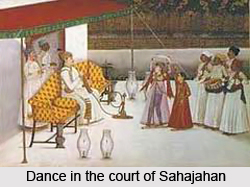 India is a treasure house of cultural and traditional heritage. This country has a long history in its every sphere. Since time immemorial when the geographical demarcations were not yet assigned, the land developed interesting ethnicity and customs. After the topographical divisions, the early civilizations also offered traces of dances and music. In ancient India dancers performed in the temples in reverence to the Gods and Goddess and the era saw rise of devadasi system. However, with the advent of medieval era, there was a radical change in the field of dance and other performing arts in the country. Dance in Medieval India witnessed several changes.
India is a treasure house of cultural and traditional heritage. This country has a long history in its every sphere. Since time immemorial when the geographical demarcations were not yet assigned, the land developed interesting ethnicity and customs. After the topographical divisions, the early civilizations also offered traces of dances and music. In ancient India dancers performed in the temples in reverence to the Gods and Goddess and the era saw rise of devadasi system. However, with the advent of medieval era, there was a radical change in the field of dance and other performing arts in the country. Dance in Medieval India witnessed several changes.
The devadasi system was well established by the end of the 10th century. They were given due importance and were considered to be attached with the prestige of the temple. Moreover, during the medieval period the devadasi or temple dancers were placed just after the position of the priests. These temple dancers were also invited by the local kings to perform in the courts. Dance in Medieval India developed with a new group of dancers who became renowned as rajadasis. They modified the technique and themes of the recitals and presented them in the princely courts and the dance seemed to be an entertainment.
During the period of Cholas, Bharatnatyam as a well accepted dance form flourished in the society. Moreover this was the golden period for the dances to prosper as popular art form. However, the period when invaders from West Asia attained their first victory in India and destructed the temples the devadasi system destroyed. In the medieval period, the status of the devadasi reached its summit and their position in the society depended on the rise and fall of Hindu temples. Dance in Medieval India alongwith the culture and customs of the country experienced disgrace.
However, Dance in Medieval India witnessed ascends with the coming of the Mughals in India. The establishment of Mughal kingdom raised the popularity of Kathak as a dance form of the period. Though Kathak was prevalent in the northern part of the country for a long time, yet Kathak experienced a fusion of Hindu and Muslim cultures which took place during the Mughal period. The social or folk dances of the states also acquired recognition in the particular regions. The dances in India, with their rich and colourful history reached the pinnacle travelling through a long journey.
Thus, though the dance forms were nurtured with a purpose in the sacred premises of temples. The temple dancing was permeated with the idea and the art form was further developed as a medium of conveying message to the masses. The allegorical view of dance was progressively transformed into a regular, service in the temples of the medieval times.



















